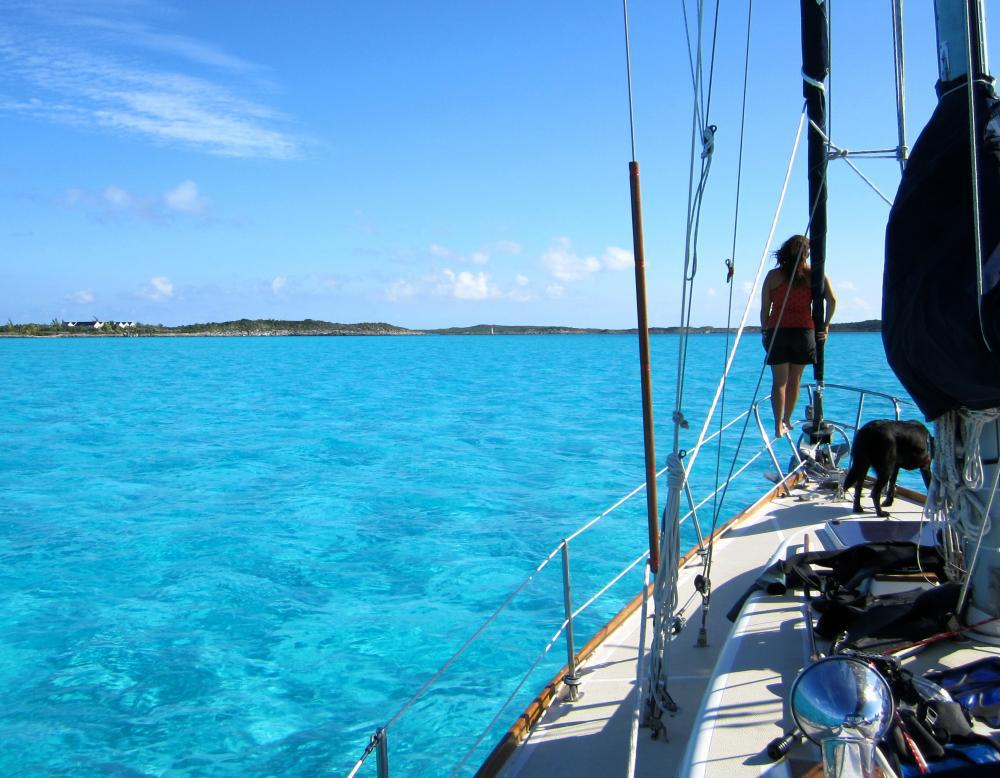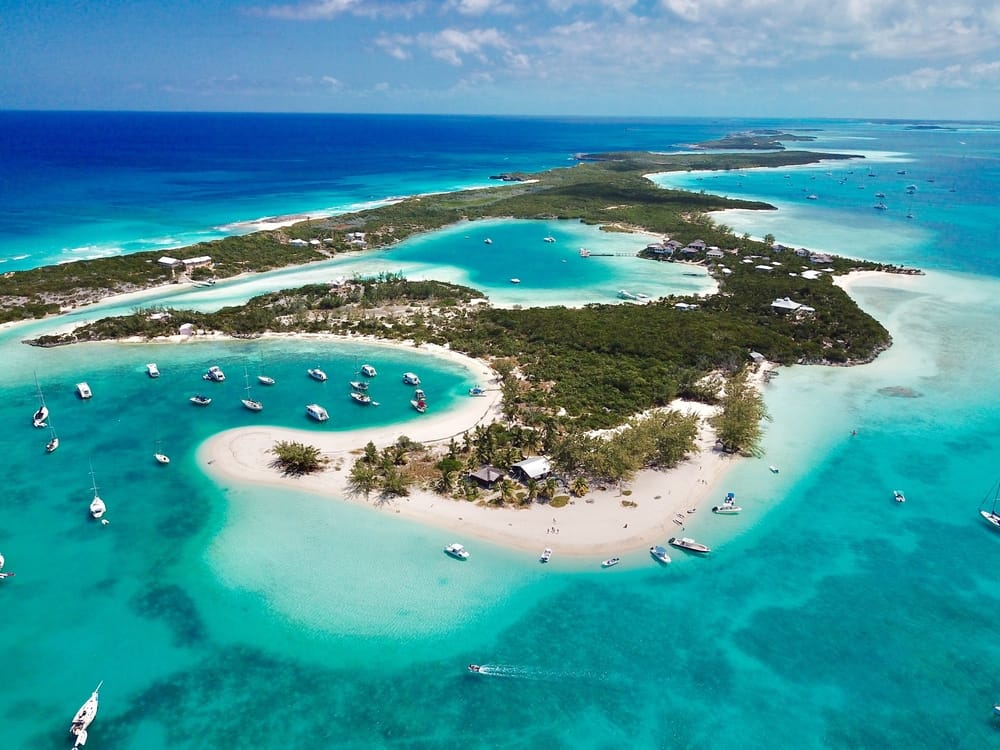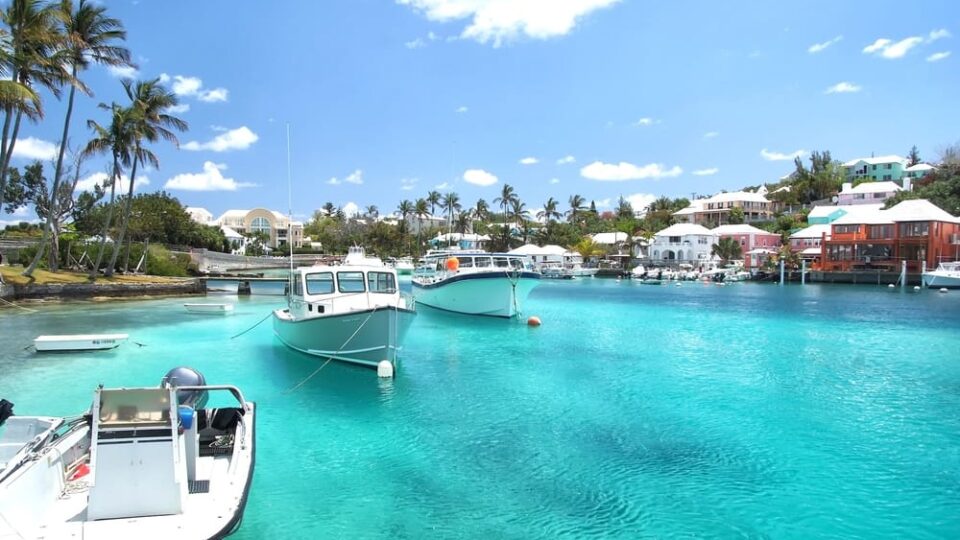Best Time to Sail to the Bahamas
About 30, 000sq.km of breathtaking turquoise blue water surrounds the Bahamas. It is among the most preferred sailing destinations in the world and welcomes many visitors year-round. There are 700 separate islands stretched all over the ocean in an area that is larger than Florida. In order to explore as much as possible the best means to achieve it is by a sailboat. There are many anchorages and ports in the Bahamas to choose from. Besides the breathtaking views and the pleasant climate, the region has an amazing sea, national parks, and remote islets and coves. Let’s see what’s the best time to sail to the Bahamas as well as the planning of a sailing trip. Keep reading!
History and Geography of the Bahamas
The Bahamas are an archipelago of about 700 islands and 2,400 uninhabited islets and cays, 50 miles off the east coast of Florida. Only about 30 of the islands are inhabited. The biggest island is New Providence on which the capital, Nassau, is situated. Other islands include Grand Bahama, Abaco, Eleuthera, Andros, Cat Island, and San Salvador.
The Bahamas form an archipelago on the northwestern edge of the West Indies. Formerly a British colony, the islands became an independent country within the Commonwealth in 1973. The islands’ strategic position forms the gateway to the Gulf of Mexico, the Caribbean Sea, and the entire Central American region. Going back to the past, the Bahamas were the place that Christopher Columbus made his landfall in the Americas. And, as we all know, the fate of the indigenous people remains one of the more tragic episodes in the entire history. Also, the early attempts in the European-dominated settlement had intense national rivalries with long periods of chaos and piracy. As a result, the society and culture in the Bahamas is a distinctive blend of European and African heritages.
The Bahamas occupy a submarine plateau that rises out of the depths of the Atlantic Ocean. This is separated from nearby lands to the south and west by deepwater channels. Large areas of flatland are the dominant topographic features of the major islands. Many islands have series of ranges of hills on the northeastern side that parallels the longer axes of the islands. These ranges are formed of sand washed ashore, blown inland by the trade winds, and eventually forming sand dunes.
Solidity increases because particles become cemented to form the Bahama limestone. Eleuthera and Long Island have the greatest number of hills exceeding 100ft. The highest point in The Bahamas, Mount Alvernia, at 206 ft is located in Cat Island. Beneath the soil, the islands are composed of limestone rock, coral fossils, and other marine organisms. There are no rivers, but some islands like New Providence, San Salvador, and Great Inagua have large lakes. Also, there’s abundant fresh water on Andros Island.
Climate and Winds in the Bahamas
The Bahamian climate is mild throughout the year and forms an important feature of the area. The average temperature varies from 21 °C during the winter to the low 27 °C during the summer. Rarely it falls below 16 °C or rises above 32 °C. The average annual rainfall is about 44 inches and happens mostly during the summer months. Prevailing winds, coming from the northeast in winter and from the southeast in summer create a humid atmosphere. Tropical cyclones, or hurricanes, are to be expected during the period from June to November and have occasionally caused great destruction.
The Bahamas’ subtropical monsoon climate offers a moderate temperature throughout the entire year. Most of the time, the best temperatures are during early mornings and late afternoons, when the sun is less intense. From December until February, the average temperature is between 21-24 °C, whereas, for the rest of the year, it’s warmer with temperatures between 27-29°C. Bear in mind that the best weather for sailors is with winds between 5 and 20 knots, except during the hurricane season.
However, the chances of a hurricane hitting the Bahamas are relatively low. This is because they mainly head towards the continental US. If you are sailing to the Bahamas in the hurricane season, make sure to take all the available precautions. You should monitor the weather all the time, navigate properly, and have a seaworthy vessel. Lastly, keep in mind that the peak season is from April to December. This makes the Bahamas beaches, areas, and ports more crowded.

>>Also Read: Best Sailing Destinations in the Caribbean
When NOT to Sail to the Bahamas
If you’re sailing from the US to the Bahamas the shortest distance is 50 miles. However, this requires sailing in open ocean waters, often with no visual marks at all. The currents, weather conditions, and navigation are some of the risks in such crossings. Another risk is the undersea rocks spread around the archipelago. These have sunk many ships since colonial times. You should carefully consider all these risks beforehand and plan a safe voyage in this tropical paradise.
Most of the precipitations fall in the summer months. At the end of summer and between June and November the tropical cyclones are more than likely to occur. As a result, the winds are very high and the water levels are rising. So, during these months it’s best to avoid the Bahamas itinerary. But, December to April is the best time for sailing to the Bahamas. This is because the temperatures are cooler and drier, and the Bahamas are less humid.
The other major risk in reaching the Bahamas is the Gulfstream. The Gulfstream is a strong current, starting in the Gulf of Mexico, and it can be seen from some points on the coast of Florida. At its fastest point, it can reach speeds of about 5 knots. Although they aren’t that common during the fall season, cold fronts can still sweep down and bring northerly winds and rainstorms alongside them. So, avoid this crossing especially if you’re a beginner sailor.
When to Sail to the Bahamas
As aforementioned, the most important thing to consider when planning to sail to the Bahamas is the weather conditions. So, if you don’t want to get caught in the hurricane season the best thing to do is to avoid the hurricane months, from June to November. Various hurricanes take place in the Bahamas and unfortunately there’s less protection and help there than you might find back at home.
So, the best time to sail to the Bahamas is generally between December and April. The temperatures are cooler, drier and the Bahamas is less humid. However, the best time to sail to the Bahamas mainly depends on your needs, available time, and, of course, budget. But, bear in mind that sailing is more pleasant when the average wind speeds are between 5 and 20 knots. This mainly happens throughout the year except when there’s a hurricane.
As for the hurricanes, they’ve hit the Bahamas several times in the past but they mostly head for the United States. Statistically speaking, the chance of hurricanes occurring to the Bahamas during the hurricane season June 1st and November 30th, is 1 in 5 chances.
Best Routes for Sailing to the Bahamas
The best departure point from the mainland US is Florida. You can start the voyage from anywhere in South Florida and keep in mind that the crossing will be much easier if you set sail in the south. Many sailors sailing to the Bahamas from the US choose Miami as a departure point.
If you’re planning to check-in at the Cat Cay or Bimini in the Bahamas, you can go further south and depart from Key Largo. But if you want to check-in at Abacos or Miami it’s a great departure point as they’ll allow you to ride the Gulf Stream a bit.
Sailing straight across the Gulf Stream is possible and many sailors take this route. However, the best thing to do is to wait for a weather window when there will be fewer northerly winds. So, it’s advisable to cross when the wind is less than 10 knots from the east and less than 15 knots from the west. The best routes for sailing to the Bahamas from the United States are 3. And keep in mind that your sailboat has to be able to sail between 15 and 25 knots in moderately calm waters.
A Sailing Voyage to Bimini (50NM)
If your final destination is Cat Cay or Bimini in the Bahamas, then head further south than Miami. For example, from Key Largo. But, if you’re sailing to Abacos, then Fort Lauderdale or Miami are better options as you can ride the Gulf Stream.
It’s about 50 miles when sailing to Bimini, Cat Cays, or any other island in the western Bahamas. These islands will give you an idea of what to expect deep into the Bahamas and of course, a taste of what it’s like to cross the Gulf Stream. You can anchor your sailboat behind Gun Cay to the north of Cat Cay.
Sailing to the Abacos (190NM)
Located next to the Grand Bahama Island, the Abacos is home to the towns of Hopetown, Marsh Harbor, and Man of War. For those that prefer crowded places and big structures, these are the best areas in the Bahamas as they offer a wide range of amenities such as hotels, nightlife, attractions, museums, shopping, and restaurants.
It’s advisable to depart from Palm Beach and sail 60 miles across the Gulf Stream before stopping at the Old Bahama Bay Marina at West End when sailing to the Abacos. The next leg of your voyage is around 100 miles and takes you to the Green Turtle Cay. You can continue sailing for about 20 miles to the epicenter of Abacos, which is home to Marsh Harbor. Continue for more than 10 miles south to Little Harbor where you’ll find numerous marinas and secluded anchorages.
Northern Exumas (220NM)
This voyage is considered a top destination in the Bahamas. You can set sail from Fort Lauderdale or Miami and sail 50 miles to Bimini. You can then head to Chub Cay, which is 80 miles farther south. Then continue sailing to Nassau, which is about 40 miles across the Tongue of the Ocean.
Then, consider sailing to the Northern Exumas but keep an eye on the reefs at the southern end of Nassau Harbor. Northern Exumas is home to several marinas including the Highbourne Cay Marina, Sea Park at Warderick Wells, and the Exumas Land.
And, whichever route you choose to take when sailing to the Bahamas, the magnificence of the Gulf Stream is one of the most important highlights of this voyage. It’s possible to experience calm crossing but bear in mind that the area between Florida and Bimini or any other location in the western Bahamas can be risky. And this mostly applies when the wind is blowing from the north. So, always check the weather forecast on a reliable app, like Navionics, before setting sail.

>>Also Read: Is It Dangerous to Sail in the Caribbean?
Last But not Least…
It’s not just the hurricane and the weather conditions that you should bear in mind when planning your sailing voyage to the Bahamas. Consider also these useful tips while making your preparations:
- Have on board enough provisions that will last you for at least 8 days even if you want to moor to a marina.
- Bring all necessary safety and medical equipment.
- In case you’re planning to anchor out, then your dinghy should be equipped with an outboard.
- Have good anchoring equipment.
- Download the best weather forecast application, even if you have to purchase a subscription, that will include currents, charts, tides, and wind detailed data.
- Even if crossing the Gulf Stream is an amazing experience it can be extremely risky so prepare your voyage accordingly and avoid sailing during the hurricane season.
The Bottom Line
Even though you can sail to the Bahamas year-round, the best time to sail to the Bahamas is between December and April. Others say that the best season is from late March to early June. The northerlies have passed and the hurricane season hasn’t begun. The skies are sunny, the winds and seas are relatively calm. The weather is warm, no hurricanes at all, and the waters are calm thus allowing you to sail around 15 to 25 knots. Sailing to the Bahamas includes crossing the open Ocean and sailing in the island’s remote areas. Also, after Easter, many of the snowbirds have left for summer up North resulting in many secluded anchorages without being overcrowded. I wish you all a pleasant and safe voyage to the magnificent islands of the Bahamas!
